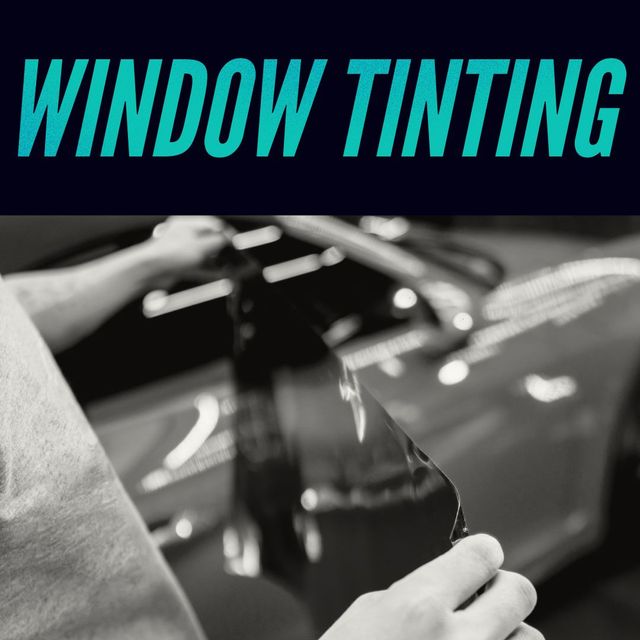Just How Auto Window Tinting Can Enhance the Resale Worth of Your Car
Just How Auto Window Tinting Can Enhance the Resale Worth of Your Car
Blog Article
Window Tinting Rules and Guidelines: What You Required to Know Before Tinting Your Vehicle
Prior to proceeding with home window tinting for your vehicle, it is important to familiarize yourself with the varied legislations and guidelines that govern this method throughout various states. These laws determine the acceptable levels of tint darkness, frequently measured by visible light transmission (VLT) portions, and include certain specifications for front windscreens intended at making sure road safety and security. In addition, particular territories may use medical exemptions for individuals with certifying problems. Comprehending these intricacies can conserve you from prospective lawful implications, however what are the particular regulations in your state?
Review of Home Window Tinting Laws
Home window tinting laws are frequently subject to variant throughout different jurisdictions, mirroring neighborhood guidelines and safety considerations. These legislations dictate the allowable levels of color darkness and reflectiveness on vehicle home windows, guaranteeing that chauffeurs preserve sufficient visibility while likewise safeguarding versus damaging UV rays and warmth.
Most regulations identify home window tinting based upon the Visible Light Transmission (VLT) percent, which shows the quantity of light that can go through the home window. Typically, lower VLT percents represent darker tints. Legislations typically distinguish between the front, side, and rear home windows, with stricter restrictions applied to the front windscreen to improve safety and security for both the vehicle driver and other roadway customers.
Conformity with home window tinting policies is crucial, as infractions can result in penalties, obligatory removal of the tint, and potential increases in insurance policy premiums. It is important for lorry owners to familiarize themselves with regional legislations before proceeding with home window tinting installments.
State-by-State Color Regulations
Comprehending the certain home window tinting guidelines in each state is vital for car proprietors looking for to adhere to the law. Each state in the U.S. has developed its very own set of guidelines controling window tinting, which can differ dramatically. These policies usually determine the allowed degrees of color darkness, the kinds of windows that can be tinted, and any type of medical exemptions that may apply.
For example, states like The golden state have stringent limitations on tint darkness for front windows, while others, such as New Mexico, may permit darker colors. Furthermore, certain states mandate particular visibility percentages for numerous home windows, consisting of the windshield, front side home windows, and rear windows. It is essential for cars and truck proprietors to acquaint themselves with their state's legislations to avoid possible penalties or charges.
Moreover, some states might need a certification sticker to be positioned on tinted home windows, suggesting compliance with state legislations. Failing to stick to these policies not just risks legal effects however can also affect safety and visibility while driving. Lorry owners should perform thorough research study or consult local authorities to guarantee full understanding and compliance with state-by-state tint regulations.
Allowed Color Kinds and degrees
Several lorry owners may be surprised to find out that enabled color degrees and types vary widely across different states. Each state has established its very own laws concerning the permitted darkness and reflectivity of window tint, often measured by Visible Light Transmission (VLT) percentages. VLT describes the amount of light that can travel through the colored windows; thus, a lower percentage suggests a darker color.

In addition, the kinds of tint products permitted can differ, with some states restricting metallic or mirror-like coatings. It is vital for car owners to familiarize themselves with their state's specific legislations to guarantee compliance. Non-compliance can cause penalties, compulsory removal of the color, or various other legal repercussions, making it critical to understand these laws prior to continuing with installation.
Medical Exceptions for Tinting
While not all states supply allowances for medical exemptions pertaining to window tinting, those that do recognize the requirement for particular people to improve visibility and comfort as a result of medical problems. Various clinical conditions, such as lupus, skin cancer cells, and specific eye problems, can provide individuals particularly conscious sunshine. Subsequently, these people may need darker colors to shield themselves from dangerous UV rays and glare.

It is necessary to note that despite a clinical exemption, there may still be limitations on the degree of tint allowed. Compliance with state laws makes certain that people are both protected and within legal limitations. Those considering clinical exemptions must contact their neighborhood Division of Electric motor Autos or equivalent authority to recognize the treatments and requirements necessary to get an exemption effectively.
Fines for Non-Compliance
Stopping working to adhere to window tinting laws can result in considerable charges, which differ by state. Police are empowered to release citations for automobiles that do not abide by the defined tinting guidelines. These charges usually include penalties, which can vary from modest amounts to numerous hundred bucks, depending upon the severity of the violation and the state in concern.
In some jurisdictions, duplicated offenses might cause escalating penalties or added penalties, such as mandatory court looks. In addition, non-compliance might demand the removal of unlawful tinting, commonly at the proprietor's expense. In severe situations, habitual culprits may encounter suspension of their lorry registration until conformity is achieved.
Furthermore, insurance policy effects may emerge from receiving several citations for home window color offenses. Insurers may view such infractions as an indication of riskier behavior, possibly resulting in raised premiums or trouble in coverage.
To prevent these charges, it is crucial for car owners to acquaint themselves with their neighborhood window tinting legislations and make sure that their lorry Find Out More complies (Window Tinting). This positive technique not just prevents legal ramifications but also promotes road safety
Verdict

The majority of policies identify home window tinting based on the Visible Light Transmission (VLT) percent, which shows the amount of light that can pass with the home window. Compliance with home window tinting laws is important, as infractions can result in penalties, obligatory elimination of the color, and possible rises in insurance coverage premiums.Understanding the particular window tinting policies in each state is vital for lorry owners seeking to abide with the regulation. These regulations frequently dictate the allowable degrees of click here now color darkness, the types of windows that can be tinted, and any kind of clinical exemptions that may apply.
For instance, states like California have stringent restrictions on tint darkness for front home windows, while others, such as New Mexico, may permit darker colors.
Report this page